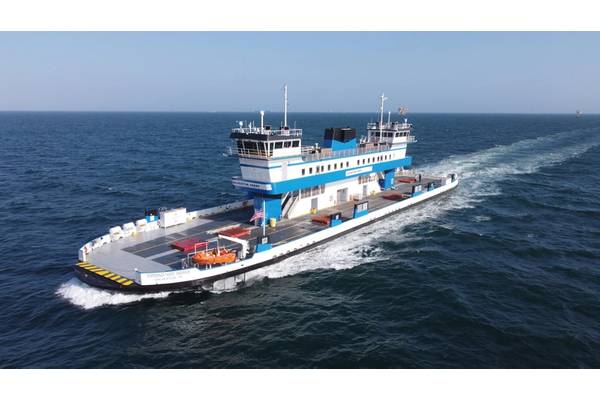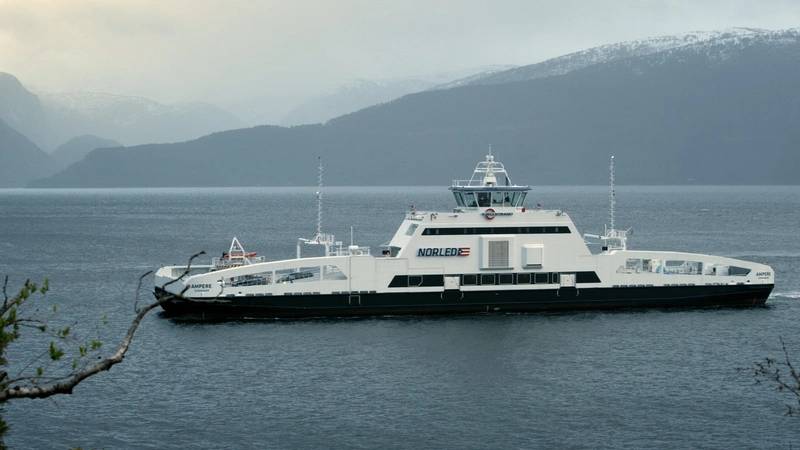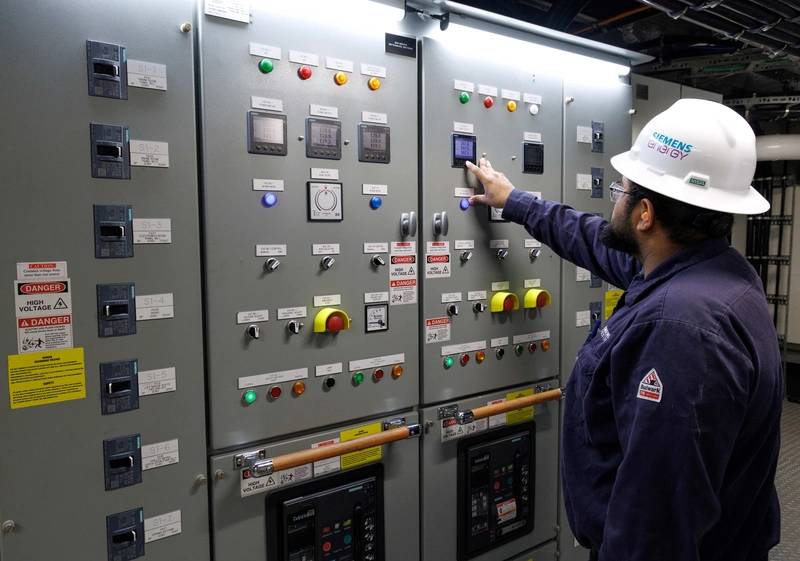

Siemens Energy has had its hands on a number of groundbreaking ship design and construction projects globally, projects that highlight the possibilities and the challenges inherent in being a technology pioneer. Ed Schwarz, Head of Marine Solutions Sales for Siemens Energy in the US and Canada, give an insider’s view of some practical steps to take if electrification is on an organization’s fleet expansion agenda.
Energy transition is everywhere you turn in maritime today, and electric solutions are an important and growing part of the mix, as mandates for vessel owners to cut emissions are balanced with the need for them to increase fuel efficiency. With that, the conversation around electric propulsion has evolved from a speculative discussion into a technological movement. At the heart of this transformation are mega companies like Siemens Energy, whose work over the past decade—and beyond—has helped shape the hybrid and fully electric marine landscape. Ed Schwarz is a seasoned industry executive with more than two decades of experience, a USMMA alum that offers a voice of reason and salient pieces of advice in discussing both today’s reality and tomorrow’s possibilities in the area of electric solutions on commercial vessels.
Hybrid and Electric Propulsion: From Fringe to Forefront
“The idea of electrification is no longer limited to niche projects,” Schwarz explains. “From ferries and offshore support vessels to containerships and defense applications, virtually every segment of the commercial maritime industry is exploring hybrid and electric options.”
What once felt like the future is increasingly the present. Hybrid systems, which combine traditional diesel engines with electric motors and battery storage, are now common across a range of vessels. Even larger oceangoing ships—historically considered too energy-intensive—are integrating power take-in (PTI) and power take-off (PTO) systems, making space for energy storage solutions and incremental decarbonization.
“We used to feel like we had to convince the industry of the benefits,” says Schwarz. “Now, it feels like we’re being pulled in. Operators want solutions—they're asking the right questions.”
 “Too often, we see owners fall in love with a design before they know how they’ll fund it. That’s backward. Start with the budget. Then design for what’s feasible now — and adaptable for the future.”
“Too often, we see owners fall in love with a design before they know how they’ll fund it. That’s backward. Start with the budget. Then design for what’s feasible now — and adaptable for the future.”
-Ed Schwarz, Head of Marine Solutions Sales for Siemens Energy in the US and CanadaAmpere: A Case Study in Progress
Ampere, a Norwegian ferry that began as a hybrid and evolved into a fully electric vessel, stands as a landmark project in this transition. Delivered nearly 10 years ago — with development starting years before — Ampere was built at a time when charging infrastructure was limited and fully electric propulsion was still a high-risk venture.
Initially operating as a hybrid, Ampere leveraged diesel generators alongside battery power. Over time, as shoreside charging capabilities were added and battery systems improved, the vessel transitioned to a fully electric operation.
“Ampere is more than just a technical success — it’s a roadmap,” Schwarz says. “It shows how you can start with hybrid, validate the technology, and then move toward zero emissions as infrastructure and budgets allow.”
The takeaways are clear: emissions have dropped dramatically, operational costs have declined, and perhaps most importantly, the vessel’s owner says they would do it all over again. “That’s the litmus test,” says Schwarz. “Would you do it again? In Ampere’s case — and in many others we’ve supported — the answer is a confident yes.” Ampere, a Norwegian ferry that began as a hybrid and evolved into a fully electric vessel, stands as a landmark project in this transition. Delivered nearly 10 years ago — with development starting years before — Ampere was built at a time when charging infrastructure was limited and fully electric propulsion was still a high-risk venture. Image courtesy Siemens EnergyBenefits with a Business Case
Ampere, a Norwegian ferry that began as a hybrid and evolved into a fully electric vessel, stands as a landmark project in this transition. Delivered nearly 10 years ago — with development starting years before — Ampere was built at a time when charging infrastructure was limited and fully electric propulsion was still a high-risk venture. Image courtesy Siemens EnergyBenefits with a Business Case
Owners who’ve made the leap to hybrid or electric consistently report positive operational outcomes. Among them:
Yet perhaps the most telling sign of success is repeat business. Schwarz points to a recent Siemens Energy project in which the operator of a hybrid-electric vessel is now planning to commission a second newbuild. “That shows the technology is delivering—commercially and operationally.”
The Three Big Challenges: Budget, Shore Power, and Regulation
While the progress is substantial, Schwarz acknowledges there are persistent hurdles. “We’ve seen three main challenges again and again: budget, shoreside infrastructure, and regulatory uncertainty.”
Overcoming the Learning Curve
With more than 1,000 vessels worldwide now operating with battery energy storage systems, the industry has accumulated enough experience to move beyond early adopters. Design processes are maturing, and costs are starting to level out.
“We’re no longer in the experimental phase,” says Schwarz. “We’re building smarter from day one, using lessons from every project before.”
That includes U.S.-based projects, where Siemens Energy currently has more than a dozen marine electrification efforts in progress, spanning ferry conversions, research vessels, and hybrid tugboats.
 Control panel for low voltage switchboards. Image courtesy Siemens Energy
Control panel for low voltage switchboards. Image courtesy Siemens Energy
Advice for Owners: Start with the Journey, Not the Blueprint
Schwarz is adamant that the best first step for any shipowner interested in electrification is education. “Talk to someone who’s done it. Go aboard a vessel. Visit a hybrid ferry. Owners love sharing their stories — and their hard-won insights.”
Siemens Energy also dedicates a large portion of its engineering capacity to educating clients and exploring feasibility long before a contract is signed. “Our job isn’t just to deliver systems. It’s to help define what’s possible — and practical — for each customer.”
And in today’s grant-heavy funding environment, starting with clear targets and defined budgets is crucial. “Too often, we see owners fall in love with a design before they know how they’ll fund it. That’s backward,” Schwarz warns. “Start with the budget. Then design for what’s feasible now — and adaptable for the future.”
An American Evolution
Though Norway helped spark the modern electrification movement in maritime, the U.S. is catching up quickly—and applying its own style. “We’re not just copying Norway. We’re adapting what they started and making it work for our ships, our routes, and our budgets,” says Schwarz.
While Europe’s model often benefits from strong government mandates and infrastructure investments, the American market is characterized by commercial pragmatism and regional diversity. “It’s not one-size-fits-all, and that’s okay,” he adds.
U.S. shipyards, in particular, have proven themselves up to the challenge. “I would put our shipbuilders up against anyone,” Schwarz says. “They’re innovative, adaptive, and solution-focused. And a lot of the expertise we need already exists from the diesel-electric offshore boom a decade ago.”
Despite shifts in political winds or grant funding cycles, Siemens Energy sees hybrid and electric propulsion as an enduring trend — not a temporary fad. “The benefits are too strong. And as more vessels come online, the case becomes clearer and clearer,” says Schwarz.
Even defense and government stakeholders are taking note. Siemens Energy is involved in projects with the U.S. Navy and the Defense Innovation Unit to explore commercial electrification technologies for military use — a cross-pollination that could strengthen both sectors.
Ampere 10 Years Later
As Ampere celebrates its 10-year milestone, it’s no longer just a symbol of what’s possible—it’s a blueprint for where we’re headed. “This industry evolves through example,” Schwarz says. “Ampere proved it could be done. Now the question is no longer ‘if,’ but ‘how soon?’”



